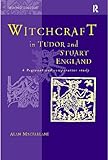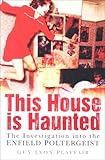Magonia 11, 1982
 Ghosts are making a belated academic comeback, with officially sponsored volumes by the Folklore Society (1) and the Society for Psychical Research (3), and a detailed social history (2). So I take this opportunity also to review some volumes which fell through my fingers first time round. That academics and journalists are both fascinated by ghosts is good testimony to their continued presence in our minds.
Ghosts are making a belated academic comeback, with officially sponsored volumes by the Folklore Society (1) and the Society for Psychical Research (3), and a detailed social history (2). So I take this opportunity also to review some volumes which fell through my fingers first time round. That academics and journalists are both fascinated by ghosts is good testimony to their continued presence in our minds.
As Finucane shows, ghosts have a pedigree going back to Greek and Roman times, a point also made by W M S Russell in the Folklore Society symposium. Russell suggests that a culture’s perception of its ghosts depends on its funeral customs; people who bury the dead portray concrete ghosts – ‘raw head and bloody bones’. An excellent Icelandic example of this is provided by Hilda Ellis Davidson, in which the revenant comes from the grave to claim person after person to join the legion of ghosts, as in east European vampire legends. This is symbolic of plague and other epidemics claiming victim after victim. Those who burn the dead envisage smoky, hazy spirits who drift across consciousness.
Finucane traces the evolution of the ghost through various stages of Christian theology. In medieval Christianity, ghosts were far from the marginal entities they are today. They were integral parts of society, enforcing its codes, demanding that justice be done, that debts be paid, that remains be buried properly and that harmony prevail among surviving relatives. Fear of ghosts’ wrath enforced proper respect for the helpless aged. Ghosts could give evidence in court. Most importantly, they enforced the correct theological line, with graphic descriptions of purgatory, heaven and hell. Living and dead were part of an organic unity: Church Militant, Church Suffering and Church Triumphant. (R H Bowyer, in (1), p. 190)
The Reformation abolished purgatory and literally damned all ghosts to hell; spectres refusing to stay there were clearly demons. This theological doctrine clashed with traditional belief and posed the awful dilemma: ‘Be thou a spirit of health or goblin damned?’ Hamlet’s ghost may well be reinforcing social mores, but in doing so it leads to demonic tragedy.
The religious persecutions of the sixteenth and seventeenth centuries created a great crop of ghost stories. The trauma of the shattering of the old order created a vast number of ghostly monks; expressions of grief and guilt, and Civil War, tore the nation apart; the ghostly Roundheads and Cavaliers, crimes magnified by the legion of rival pamphleteers, haunted on. History’s wounds were unforgotten and unforgiven, held in thrall by generations of local gossip and tradition. It should be remembered that in the nineteenth century there were still districts where families voted Liberal or Conservative, depending on which side their ancestors had fought in the Civil War.
The Reformation had damned ghosts, partly because it was trying to escape tradition. A society which perceives the world in fairly stable terms might be able to come to terms with its ‘history’ walking around; a society seeing itself in dynamic terms needed to jettison history – it was now necessary to dispose of traditional customs, producing the tensions which also gave rise to increased witch belief. (8)
There were other effects of the Civil War. The farmers and artisans who joined the Parliamentary armies were exposed to the ferment of new ideas, questioning the whole basis of traditional society. Conversely, the gentry and aristocracy, repelled by ‘the mob’, withdrew physically and intellectually to an unprecedented degree. Both sections of society began to reject ghost stories and traditional religion, while the Anglican Church, re-established and protected by penal legislation, looked on in apathy.
In these conditions Puritans like Richard Baxter, who 60 years ago would have considered ghosts as damnable, now began to use them to conduct the campaign against the modern Sadducees. (cf. (9)) Though the intellectual and literate elite may have despised ghosts, the vast majority of their fellow countrymen probably continued to hold traditional beliefs.
These traditional beliefs were taken into the rapidly growing industrial towns by the masses coming in from the country. Finucane does not cover the ideas of the working classes during this period, but some background can be gleaned from studies by Thomas (10) and Hamson (11).
By the mid-nineteenth century the ghosts had receded into a dim figure on the margins of consciousness. The only message that it had to give was the message of survival itself. Ghosts receded from society. From Mackenzie (3) emerges a nice picture of the typical Victorian ghost. The Despard ghost was a widow in black – like the maiden aunt or the widowed sister an embarrassing addition to the family.
The anonymous Victorian ghost flitting through the house reflected the breakup of the traditional home held for generations. The Victorian family, drifting from one leased house to another, were strangers in their own residences. The servants often had far more intimate connection with the house than their masters; they were part of the local community and its repository of folk history. As Claire Russell points out in the Folklore Society symposium, ghosts are about the living. In the Victorian period houses tended to become haunted because the local community decided that some fundamental violation of the social mores had occurred.
This could range from anything between murder and leaving the house vacant too long. In many cases, ghosts were the expression of the community’s hostility to new tenants, and the tenants’ alienation from their residence. Significantly, many modern haunted houses are council houses or rented properties.
Haunts were not the only ghosts: death-bed apparitions, crisis apparitions, fetches and warnings, testified to the uncertainties of Victorian life – the separation of relations sent abroad to colonial fever spots, the rampant infant mortality. Many of the people who became the centre of crisis apparitions had broken social mores in some way. One suspects that many ‘old and dear friends’ from the colonies who appeared to married women, were lovers sent away in disgrace.
Finucane notes the rigid social distinctions that operated in Victorian psychical research: that the middle classes never lied, that servants were timid and unreliable, and that the ‘peasantry’ were unthinking brutes. This led to some embarrassing situations, as in the case of poor Judge Horby, who found he either had to admit to lying or to sleeping with his wife before they were married.
If the psychical researchers turned their backs on the peasantry and their beliefs, the folklorists put them on pedestals. Romantics, rejecting the industrial revolution, dreamt up a fairytale past of noble peasants in little thatched cottages in a green and pleasant land. Such folklorists as the Dane, Evart Tang Kristensen could take seriously any ghost. These included revolving fiery wheels, or the wagon with three wheels which had the power to paralyse other waggons on the road, like modern UFOs. The folklorists and romantics created a market for Gothic horror stories and gibbering spectres.
The traditional Victorian ghost story reflected a sense of the horror beneath the placid surface of everyday life. They were reminders of the thin veneer of Victorian rationalism. It is hardly surprising that, as Julia Briggs points out, the ghost story as an art form fell when that veneer was wiped away in the trenches. It is hardly surprising, then, that the heyday of the ‘true’ ghost story lay in the period before the First World War. It is significant that more than half the accounts in Mackenzie’s book refer to the period before the War. If ghosts are products of the human imagination’s response to real or imaginary outrages, then how can they be generated by the truly unimaginable outrage?
The modern ghost may well be more extrovert than his Victorian predecessor. Randy spectres fondling young ladies in council houses are all right in the pages of the Sun or the National Voyeur, but are hardly the right sort of company for the SPR. Modern ghosts are often drained of terror completely. The once-grim messengers are now reduced to competition with space-invader machines as tourist attractions in pubs. No longer even dim messengers of survival, perhaps memories of a lost history.
The poltergeist is the truly contemporary ghost, in its element in the age of the vandal. The poltergeist becomes a symbol of the shattering of society’s rules, the voice of the voiceless. The horror of contemporary fiction is now the super polt, heavy with fantasies of omnipotent destructive power. The quiet, old-fashioned ghost, like the spectre of little Johnny Minty, as described by Mackenzie, weeping endlessly for his mother, may pull at our heart-strings; the polts, evoked by Gauld and Cornell (4) or Rogo (6) can still give us the horrors. The emotion evoked by an attack by a poltergeist is the same as that of an attack by burglars or vandals, one of violation. It is this sense of violation of the home as a bastion against the forces of the wilderness outside, the overthrow of the safe rational world of everyday reason and common sense.
It must be said that the pre-poltergeist worlds of many of the victims do not seem especially safe or rational. The family discussed by Playfair (5) were already under the attention of social workers, and other polt families have had pretty severe problems. It is hardly surprising that both ‘normal’ and ‘paranormal’ trickery take place together; they are perhaps different means of expressing the same crisis.
Gauld and Cornell also describe place-centred polts, places which seem to be hostile. The old term ‘boggart’ seems aptly to describe this centre which generates confused multiform hallucinations and strange noises. Once again, is it not to the neighbours and the local community that we should look for reasons why a place becomes labelled ‘off-limits’? The only ‘message’ here seems to be: ‘Fear, fear’; ‘Get out’; ‘Boggart off!’
Ghosts are on the retreat, their role as dispensers of justice replaced by a modern police, their power to communicate across distances replaced by the telephone and television. Perhaps they have now faded forever beyond the reach of psychical researchers; soon the vandals will drive the polts away. Yet if their disappearance marks the end of our capacity for outrage, then we are in deep trouble. Maybe the ghosts of Belsen, of Hiroshima and of Kampuchea should howl and gibber and cry out for vengeance.
REFERENCES
- ELLIS-DAVIDSON, Hilda R and RUSSELL, W M S (Editors), The Folklore of Ghosts. Cambridge, D S Brewer, for the Folklore Society, 1981.
- FINUCANE, R C, Appearances of the Dead: A Cultural History of Ghosts. London, Junction Books, 1982.
- MACKENZIE, Andrew, Hauntings and Apparitions. London, Heinemann, for the Society for Psychical Research, 1982.
- GAULD, Alan and CORNELL, A O, Poltergeists. London, Routledge & Kegan Paul,1979. E9.95
- PLAYFAIR, Guy Lyon, This House is Haunted: An Enfield Poltergeist. London, Souvenir Press, 1979. E6.95.
- ROGO, D Scott, The Poltergeist Experience. Penguin, 1979.
- RHINE, Louisa, The Invisible Picture – A Study of Psychic Experiences
- MACFARLANE, Alan. Witchcraft in Tudor and Stuart England, Routledge and Kegan Paul, 1964
- WALKER, D. P. The Decline of Hell, Routledge and Kegan Paul, 1964
- THOMAS, Keith. Religion and the Decline of Magic. Penguin, 1973
- HAMSON, J.F.C. The Second Coming; Popular Millenarianism 1780-1856. Routledge and Kegan Paul, 1979.
- BRIGGS, Julia. Night Visitors; the Rise and Fall of the English Ghost Story. Faber, 1977.
Click on the cover images to order these books from Amazon.



